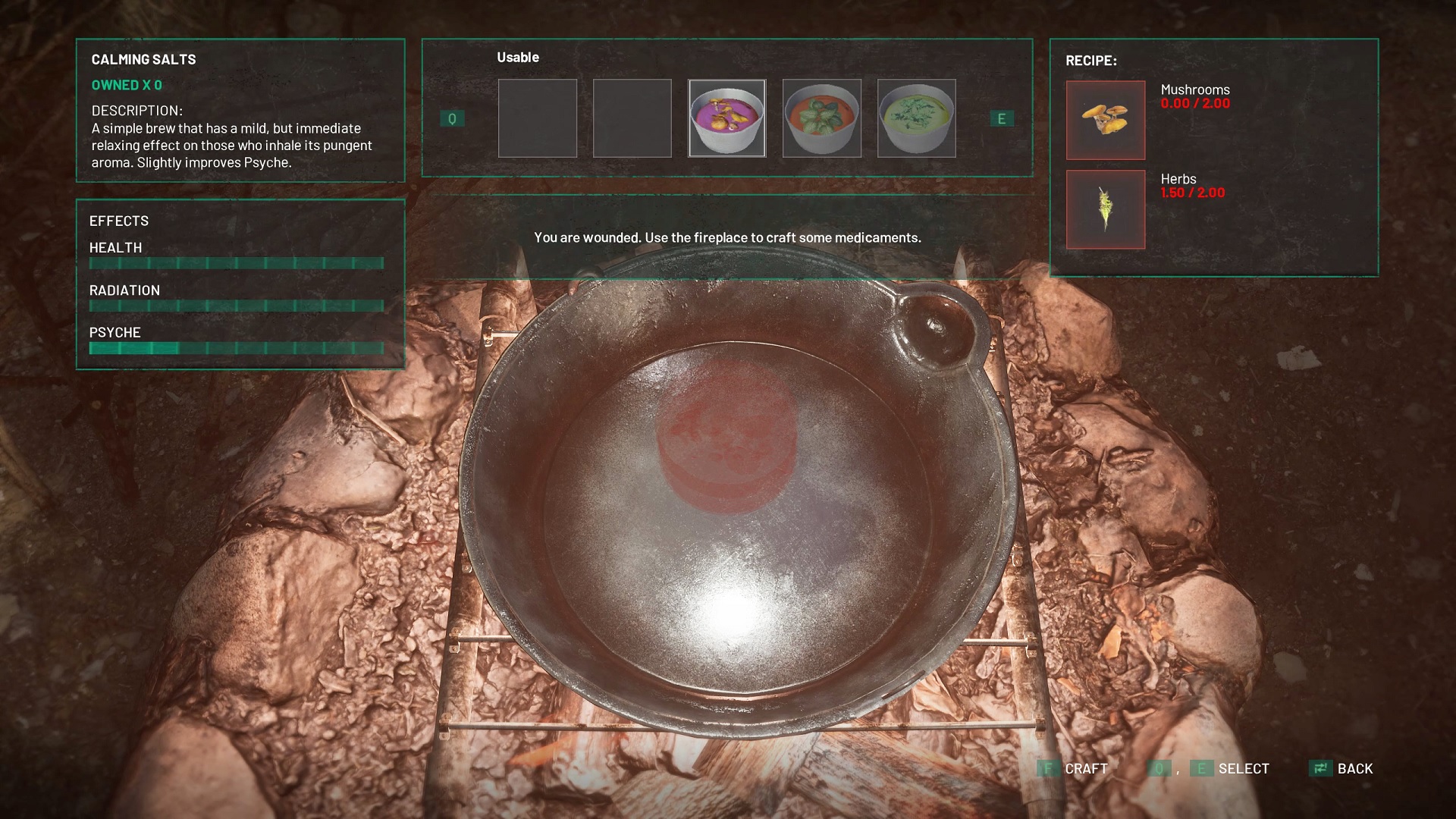Have you tried… building a base to explore an irradiated, evil wood in Chernobylite?
Story horror, survive-em-up and shooter make an interesting mix in this Early Access challenge

I nearly bounced off Chernobylite hard. Its spooky set up of exploring an irradiated, monster-filled Chernobyl explains nothing. After wandering cluelessly around a forest for a while, with nothing more than 10 bullets for a revolver only slightly more damaging than a bad Yelp review, I died. Then I shut the game down. Then I didn’t play it for days.
Then I came back, obviously. You don’t buy a game and give up on it straight away because you don’t understand what’s going on. No, you hate play it for a while to make sure you really loathe it so when you delete it you’ve built that hatred into a passionate and vivid thing that makes clicking the delete confirmation an emphatic middle finger to an inanimate piece of software that neither knows or cares. Buuuut, obviously this is going to be a short bit if that actually happened. So thanks for reading here’s my Soundclo… No, of course I kept playing. Because despite some rough Early Access edges there’s an interesting challenge here built on a uniquely quirky take on several genres.
Building a good base
It's a first-person shooter for starters but formed around a base building, ‘start with nothing’ survival craft-em-up game. There are horror elements, time travel, randomised missions that expire, forcing you to make tricky choices about what to do, and companions you can lose through death or just being a bad friend. There is a lot going on.
The basic set up is that the Chernobyl disaster created a strange and spooky no go area when it exploded. Think STALKER, Metro, and all that atomic power boogeyman mythology that comes from having the world's largest nuclear accident. In this case, events created a mysterious and sought after mineral called Chernobylite, rather than an award-winning HBO show. What Chernobalite does is a bit… [waves hands]. It’s basically a magical green rock tied to creating strange temporal anomalies that see future and past events merge, as well as birthing spindly humanoid creatures called Shadows. But, while you’re there under the cover of trying to get Cherobalite, it’s really a cover for your main objective, which is trying to find your missing fiancée Tatyana, who disappeared in the disaster.

The initial set up is very narrative-focused but the main gameplay is much more open and very survival-oriented. You start with nothing but a mission board, in a derelict, partially flooded warehouse. In order to build the crafting stations and gear, you need means going out into the world to complete various objectives. These might be story-based, or resource focused - gaining you food, ammo, or medicine. But every mission is only available for a set time - usually a day, three at the most - forcing you to choose. Do you ignore a mission that will advance the plot, because you desperately need ammo, knowing you won’t get the chance again? Or do you take the plunge on a quest that might unearth a clue about Tatyana, that might mean you and your companions starve in the meantime - becoming less efficient and more disillusioned as a result.
There are various companions you can find along the way that fill up your base. They’re double-edged rewards because the more people you have, the more beds, food, and power you need. Like real-life friends, they’re a resource drain. But you can also send them out on missions for you, their percentage chance of completion based on how well-fed and happy they are. Getting and keeping a companion essentially lets you farm out ammo and food runs and spread the workload while you focus on story-based stuff.
Exploring the opportunities

The survival elements play out in the missions as well as the base building side. The first time you head out you’ll have no ammo, a terrible gun and have to rely on stealth and running away to get by. The missions take place on an open map, with objectives and markers scattered around. You can make a beeline for the main task, or spend some time searching buildings and other areas for opportunistic resource grabs. There are random elements too, like enemy guards shaking down other explorers or injured people you can stumble on. You can choose to help them, likely meeting them later as an ally, or leave them. Usually to die and be lost forever.
Sign up to the GamesRadar+ Newsletter
Weekly digests, tales from the communities you love, and more
Then there are the Shadows, strange twitchy creatures that climb in and out of portals - the sound they make as they wink in and out of existence is enough to make you freeze and drop while you work out where they are. It’s a creepy game generally, with strange distant figures that fade away as you approach, or dolls that sit watching TV and disappear when you turn it off. You’ll hear footsteps and doors closing when there’s no one around, creating a constant vibe of ‘shit ain’t right’ running through the world as you move around. The fact that you're exploring and finding things on your own as well, means it doesn’t always feel like a scripted moment either.

As you progress through this all you start to get better equipment and gear. At first, it’s all about food, but later you start to hoover up various mechanical and electrical parts, and other things to build gun benches, health pack crafting campfires and so on. As you do, you’ll also have to balance power, air quality, and radiation just to keep the base habitable so your friends stay happy and functional.
There’s a nice learning curve to it all as you figure out how the world works, what your base needs, and how you can deal with it. I started with very nervous, darting missions where I tried to grab what I needed and run. Now, tooled up with a heavily upgraded revolver, as well as an assault rifle and shotgun, I’m much more into longer exploratory expeditions, only returning when my pockets are full.
Rough play

This is an early access game though so there are occasional coarse edges and rough joins holding it all together. There’s some place holder VO here and there, leaving you reading subtitles as random speech noises play (and some of the writing is ropey both grammatically and artistically); a prison where you can escape from if you surrender in a fight is a barely formed, clearly WIP space. It’s all functioning, just a bit hobbled together in a few spots. The time travel idea which is really interesting and a core part of the story is also not fully realised mechanically as far as I can tell. The main idea is that when you die, you go back a day to replay it again and get a chance to change specific decisions you made to see if things play out differently. Trouble is I’ve only seen one example of that at the moment, which was the opportunity to change a conversation choice and re-start with a character liking me more. It’s an interesting idea and something I’m keen to see fleshed out.
And it’s the amount of fleshing out Chernobylite needs which will probably be the key decider in whether you want to take the plunge right now. It’s $30/£24 on steam in early access and while I’m enjoying it, and exploring what’s there, it’s definitely a work in progress with plenty to add. That said, what I’ve played so far is a spooky and interesting challenge that I'm’ still experimenting with. It’s an unexpected combination of influences and ideas that makes its otherwise basic survival shooter action feel unpredictable. At the very least if you’re not tempted yet, it’s one to watch for later.

I'm GamesRadar's Managing Editor for guides, which means I run GamesRadar's guides and tips content. I also write reviews, previews and features, largely about horror, action adventure, FPS and open world games. I previously worked on Kotaku, and the Official PlayStation Magazine and website.


